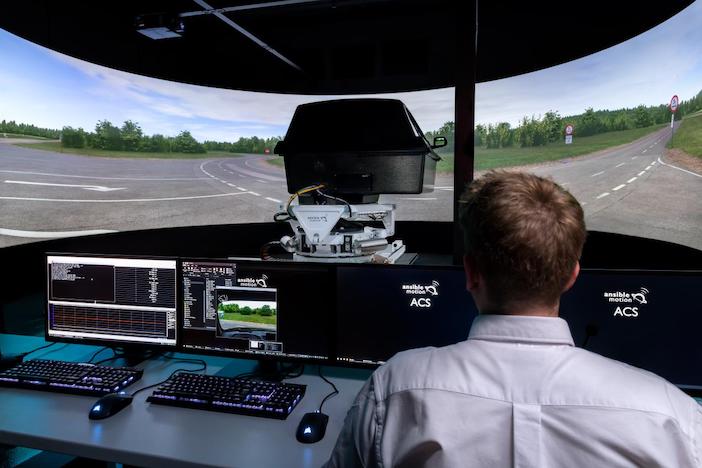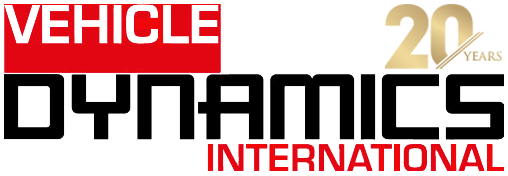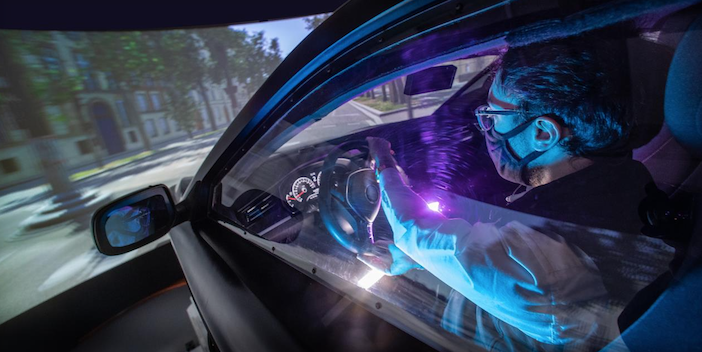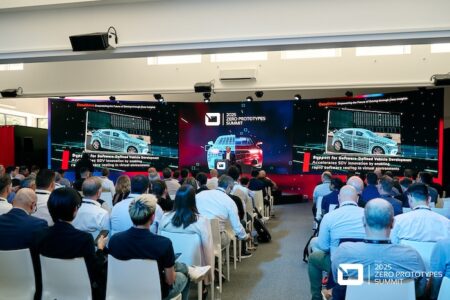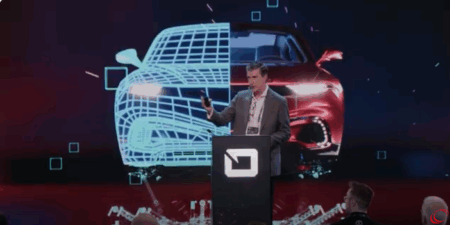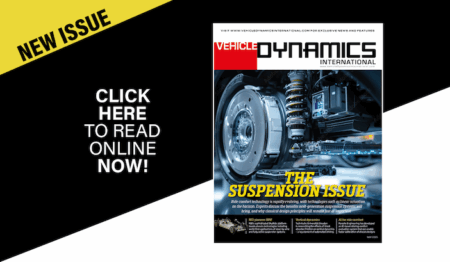Ansible Motion has revealed its Delta series S3 Driver-in-the-Loop (DIL) simulator, which it describes as its “most sophisticated and versatile simulator to date”. According to the company, the technology is capable of validating the megatrends of electrification, autonomy, driver assistance, HMI and vehicle dynamics by enabling high-fidelity, high-dynamic, human-centric vehicle simulations in the laboratory. Deliveries will begin in 2022, and the company has already secured advanced sales with BMW, Continental, Honda R&D, and Deakin University in Australia.
A key enabler of the Delta S3’s dynamic capabilities is all-new AML SMS2 Stratiform Motion System, designed and manufactured in-house, which is capable of full 360° dynamic yaw rotations, with a set of engineered linear rails – scalable from 4 to 10m in length – that enable sustained, independent sway and surge motions. The system can deliver acceleration beyond 1G, velocities above 5m/s and strong frequency response, for an immersive and representative experience when simulating manoeuvres such as aggressive lane changing and autonomous parking.
The system has a scalable architecture so that customers can specify various size options, to suit a broad range of automotive product development use cases such as expert driver assessments, chassis dynamics, powertrain driveability, ADAS and active safety function calibration, V2X studies and HMI design evaluations.
Ansible Motion has also developed a new mechanism for carrying the vehicle cabin, which offers a further three degrees of freedom (heave, pitch and roll) to the vehicle motion profile. The design enables a vehicle cabin up to 500kg to be exercised dynamically in all six degrees of freedom (the maximum possible for defining the motion of a body), at any point, avoiding the need for complex interactions between multiple motion controllers.
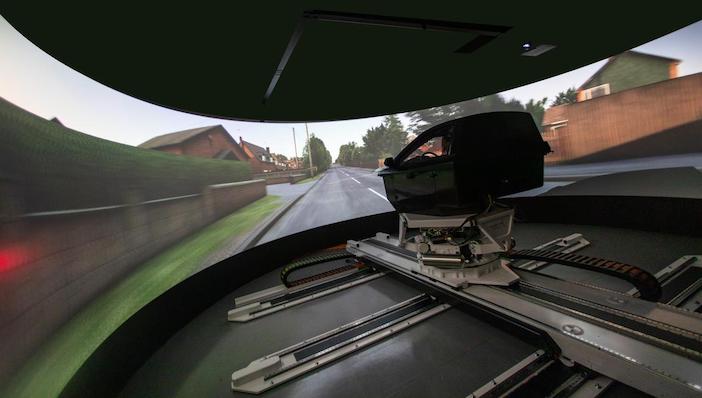
“Our new Delta series S3 addresses a requirement from both OEMs and Tier Ones for a highly capable and versatile driving simulator – a single virtual environment that delivers everything needed to convincingly engage real people with the automotive product development process, early and often, sometimes well before prototype vehicles exist,” stated Ansible Motion’s director, Kia Cammaerts. “We have always focussed on achieving high-dynamic and high-fidelity motion for all six degrees of freedom that define a vehicle’s movement. The new Delta series S3 simulator expands on this in all areas, ensuring it’s a dependable tool that meets the demands necessary to validate future automotive technologies.”
One particularly noteworthy feature is that users in the lab can connect the simulator with a powertrain located anywhere in the world and evaluate how it works with a vehicle. The Delta S3 uses the latest version of Ansible Motion’s AML DDB Distributed Data Bus, a synchronous real-time computing environment with open and modular software architecture that enables connectivity to the external simulation environments and Hardware-in-the-Loop (HIL) test benches required for drivetrain development. Effectively, this means that engineers and evaluators can ‘drive’ a car with a brand-new combustion engine (ICE) or electric powertrain unit that may be operating on a dyno in a completely different location.
